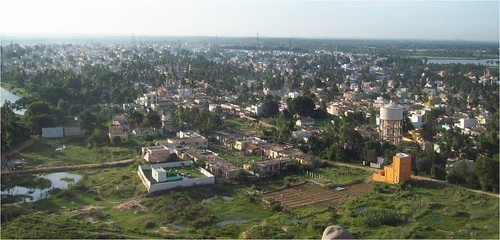/topics/wells-and-step-wells
Wells and Step-wells
Amritsar - the pond of nectar
Posted on 16 Aug, 2013 02:27 PM“PAWAN GURU, pani pita, mata dharti mahat” (air is teacher, water is father and earth our mother) - thus goes the closing line of the Japji Sahib given by the founder of Sikhism, Guru Nanak Dev. It holds special significance for Amritsar, the holy city, which boasts of the Harmandar Sahib (also known as the Golden Temple).

What's in your drinking water?
Posted on 19 Jul, 2013 03:11 PMBoth rural and urban India are faced with water problems. People do not have access to good quality, safe drinking water. The source for most drinking water is either rivers or underground aquifers (wells). Since water can dissolve just about anything that it comes into contact with long enough, often the groundwater we get isn’t pure.

The Bhilai Steel Plant, a symbol of modern India, is running out of iron ore
Posted on 06 Jul, 2013 09:31 AMFor the last 50 years, the Bhilai Steel Plant, which is India's largest integrated steel plant has got its supply of iron ore from Dalli Rajhara's mines. Dalli Rajhara, a municipality which is also an industrial city is located 90km south of Durg in Chhattisgarh. It is a part of the Rajhara group of mines. Iron ore mined in this area are of two types - hematite and magnetite.

Certificate programme on village GIS software, IIT Madras & WASSAN, Chittoor (AP), July 22-26, 2013
Posted on 02 Jun, 2013 04:51 PMDelhi’s ground water hits rock bottom
Posted on 20 May, 2013 12:40 PMGreen pastures and meadows, tall trees, lakes, wells and the river…those are my memories of Delhi. It wasn’t too long ago that one woke up early to the sounds of lawns being watered, children running off to school and people walking in the parks. A flurry of activity but quite different from what it is today.

Anthropogenic activities leads to deterioration of groundwater quality: A study of Mayyanad and Edamulakkal panchayats of Kollam district in Kerala
Posted on 22 Feb, 2013 10:07 AMKerala is a rain blessed state in the country. It has highest number of wells, when compared with other states. However due to its slanting topography there is significant decline in the ground water levels leading to severe water scarcity during summer months in most districts of the state. Further over extraction and dependence of groundwater for domestic use from the dug wells especially in rural pockets has resulted in several groundwater problems. In this backdrop the paper in The Ecosan- An International Quarterly Journal of Environmental Science, sheds light on groundwater quality issues in two panchayats of Kerala.
Assessing the land use change and its impact on water resources: A study on the Mula and Mutha rivers catchment area in Pune
Posted on 17 Feb, 2013 09:11 PMLand use changes hydrologic system and have potentially large impacts on water resources. An assessment in an area with seasonally limited water availability and which is subject to rapid socio- economic development and population growth will provide an exemplary view on the local impacts of major recent developments in India. In this backdrop this paper analyzes past land use changes between 1989 and 2009 and their impacts on the water balance in the Mula and Mutha Rivers catchment upstream of Pune. The aim of the paper is:
- assess the land use changes between 1989/1990 and 2009/2010
- analyze the impacts of these changes on the long-term water balance components in the Mula and Mutha Rivers catchment upstream of the city of Pune.
Impact of pit-toilet leachate on groundwater chemistry and role of vadose zone in removal of nitrate and E. coli pollutants in Kolar District, Karnataka, India
Posted on 04 Jan, 2013 02:00 PMGiven the many problems associated with flush toilets and the sewerage system, pit toilets offer a viable solution in India. However, the use of soakpits raises the question of groundwater contamination. This paper assesses the impact of pit toilet leachate on groundwater quality in Mulbagal town (pop ~ 60,000) in Karnataka relies on pit toilets, and uses groundwater for drinking.
Highlights from the 10-year water policy research programme of the International Water Management Institute and the Sir Ratan Tata Trust discussed at the IWMI - TATA Annual Partners' Meet at Anand, between 28-30 November, 2012
Posted on 05 Dec, 2012 02:06 PMIWMI-Tata water policy research programme is a collaborative initiative between the International Water Management Institute (IWMI) and the Sir Ratan Tata Trust (SRTT).
Dugwell - An asset for sustainable livelihood: An Arghyam and Action for Social Advancement (ASA) project carried out in 2 tribal bocks of Ratlam district in Madhya Pradesh
Posted on 27 Oct, 2012 10:44 AMAt the same time we also need to keep in mind the judicious use of natural resources, especially in rain-fed areas. Integrating sustainability and demand is one of the greatest challenges faced by communities and nations today.




